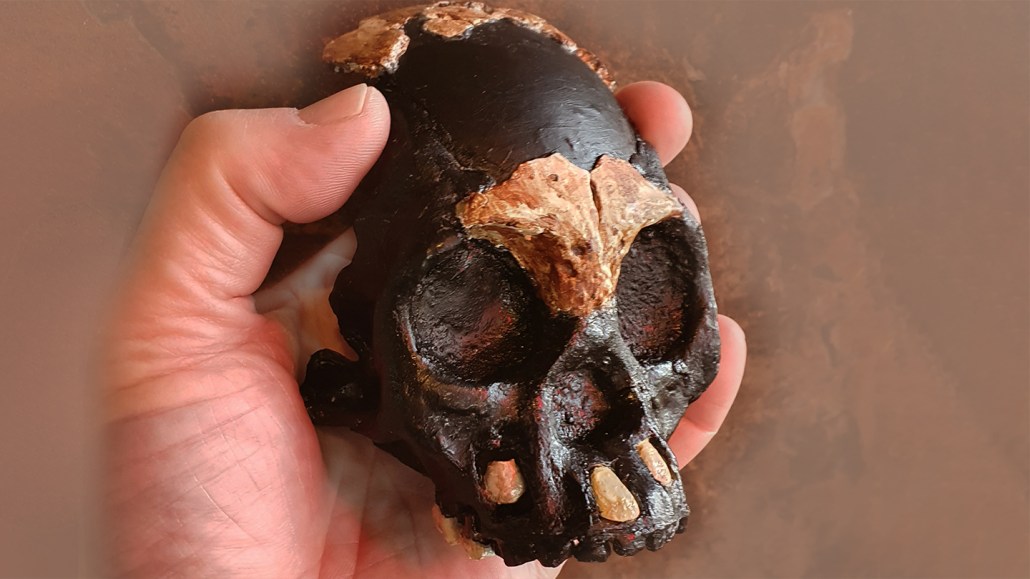A child’s partial skull adds to the mystery of how Homo naledi treated the dead
Found in a narrow opening, the remains stoke possibility of ancient, deliberate cave disposals

A researcher holds a reconstruction of a Homo naledi child’s skull based on fossil pieces and teeth (lighter-colored areas) found in a remote passage inside a South African cave system.
© Wits University







